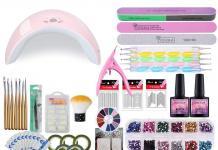Ever since Apple introduced its iconic smart phone, the iPhone, touch screen has become the talk of the day and its absence really goes against the fashion. Worse trend followers (like me) would not like even a sight of non-touchscreen devices, particularly smart phones. Oh! Of course, I love and take care of my PC as I did and would always, touch no bar.
While working on touch screen is a fantastic experience in itself which goes a step further every time we see an innovative app our touch screen phone, there is one more advantage which other devices cannot have. This utility residing solely on touch screen devices is the ability to ‘draw’. It is true I do not get to draw too much or too often on my Android device due to still smaller screen than required for a good drawing, the case with iPad is totally different with the large 9.7 inch display screen.
Without any doubt, drawing on iPad will be easier and far entertaining than it is on smart phones but it would be still better if you had a pen in your hand working as input device on your iPad or even on smart phone. So, here we go as we learn how to get a homemade pen for effective and efficient drawing on touch screen based devices.
Thanks to Cullin Cunninham, we know a DIY process with a video tutorial, following which we will be able to get ourselves a conducive stylus to draw on the iPad, iPhone or any other capacitive screen equipped devices. Watch the Video and you will be able to make one for you, very easily. In Collin’s words, this process is quick, super-simple, and requires no soldering chemicals or schematics.
In fact, you only need foam, copper wire, one plastic pen and other tools to help you with. Follow the quick video and you are done. What, thinking of selling it on eBay? I knew it. Whether selling or not, you can always add some extra inputs of your own to make it look more prettier and different, for the sake of your style statements. Cannot ignore on that!
Plus, it needs mentioning that using a metal pen barrel instead of a plastic one (like instead of the plastic pen in the video tutorial), will absolve the need of wire. The metal pen should work well so far the foam is connected to a conducive material, including human body (hand, in this case).
Find the stylized depiction of the Gakken SX-150 over here.
So what you waiting for. Create your own conducive stylus at home right now! you find it amusing, thanks Collin at MakeZine.
For other such cool stuff, visit these links to create a Map Envelope or playwith your character with the Blimp iPad.











